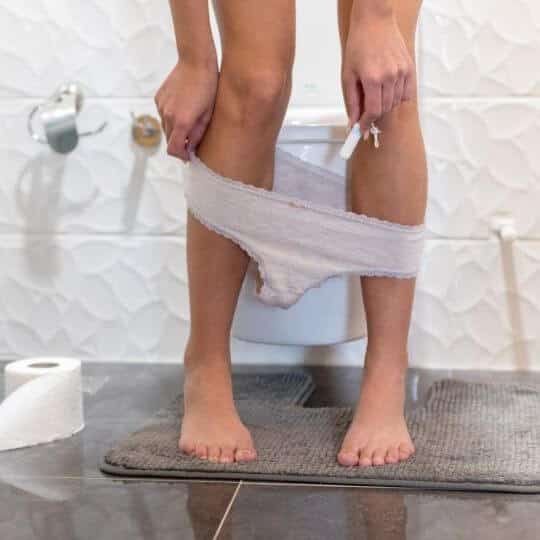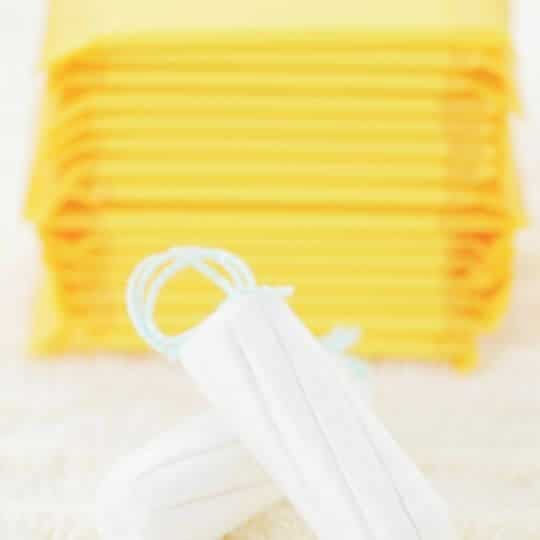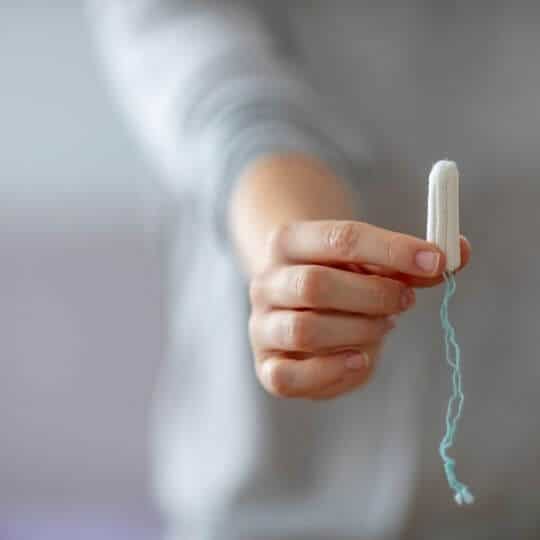Can you flush tampons? If the answer is no, how to dispose of them? What if you accidentally flush one?
More than 50% of women believe flushing tampons down the toilet is a basic courtesy. That is why the sign “Do not flush feminine hygiene products down the drain” gets so easily ignored. Some females strongly believe cotton tampons are totally flushable.
No doubt, flushing a tampon is so convenient – you pluck it out without even having to look at it or barely touch it, flush it down the toilet, and you’re good to go. Yet, just because it is easy, doesn’t mean it is harmless.
Can you flush tampons is a question so fiercely debated we decided to create a blog about it and finally provide the definite answer, elaborate on it further, and answer some related questions such as how to dispose of a tampon when at someone else’s house, what to do if you accidentally flush a tampon, and more.
What Do Tampon Brands Say, Can You Flush Tampons?

No tampon brand says you can flush tampons. What is more, some of them, such as Kotex and Tampax warn about the septic system issues tampons can cause if flushed. You’ll also find instructions on some tampon boxes that you should throw used tampons in waste containers. These brands, such as o.b. are subtly speaking you should not flush tampons.
Can You Flush Organic Tampons?
Yes, you can, although organic tampons tend to accumulate human waste and block drains over time as well, just like regular tampons. On top of that, they take a very long time to actually break down, typically around 6 months [1] which is why you should avoid flushing both biodegradable and compostable tampons in general.
Why Exactly You Shouldn’t Flush Tampons Down the Toilet?

1. You’ll eventually have to deal with a backed-up toilet
When flushed, tampons absorb water and other liquids (great for period leaks), swell (unlike toilet paper), and get mixed up with solid waste in a sewage system, which is not so great and can lead to major blockages. How do we know this? Blockages tampons create usually have to be removed by hand (take this as first-hand information you would get from an experienced plumber). If you don’t want to damage your wastewater infrastructure, or, God forbid, send those tampons into a stream or a river, refrain from flushing them down the drain.
2. You’ll contribute to pollution
Most people have combined sewer systems [2] – systems that dispose of wastewater and rainwater. These systems are equipped with overflow protection in case of a massive rainwater inflow. On the other hand, there are sewer systems where both wastewater and rainwater are channeled to a single place. So, in case of an overflow, stormwater mixes with other things that are flushed. To prevent clogs, some sewer systems come with grinders that break down the solid waste, such as tampons and menstrual pads into dozens of plastic pieces that travel further to a river.
If flushed tampons don’t clog your sewer, they will, highly likely, make it not to a river but actually to the ocean. Believe it or not, more than 2,5 million tampons, 1,4 million menstrual pads (mostly made of plastic), and 700,000 liners, are flushed on daily basis [3], which massively contributes to pollution. The only worst thing than flushed tampons is flushed plastic applicators that threaten marine life and pollute rivers, seas, oceans at the same time. Unlike cardboard applicators, plastic applicators may take decades to biodegrade.
3. You’ll negatively affect public infrastructure
Utilities are paying billions of dollars to get feminine hygiene products (tampons, pads, liners) and wipes out of their drainage systems. We guess you wouldn’t want to be one of the reasons for someone’s financial disaster.
How to Safely Dispose of Tampons

If tampons are not meant to be flushed down the drain, how do you dispose of them safely? How do you dispose of tampons at someone else’s house? In a nutshell – bag it and bin it. Once you’ve removed the tampon, wrap it in toilet paper or a tissue and pop it in a bin.
What’s about paper towels? Should you flush them?
You’ll find small trash cans in most ladies’ restrooms (placed there for a reason). And, if you are at some else’s house, do them a favor and throw the tampon in the trash. Flushing a tampon can, as we mentioned, cause a blockage within their plumbing system as the thing expands.
You can also use bags specifically designed for disposing of tampons when there is no toilet paper or if you are using a toilet without disposal facilities.
If you, for any reason, can’t stand the idea of getting more personal with tampons but now know for sure you should stop flushing them, we can suggest several alternatives. Try using menstrual cups or period panties (both reusable) so that you can save the planet and some money at the same time.
Either way, always go opt for eco-friendly hygiene products that are not only healthier for your body but contain less plastic and won’t pollute the environment as much as non-biodegradable products and take considerably less time to break down.
What If You Accidentally Flushed a Tampon?
A single tampon is not very likely to clog your plumbing system. Yet, if you can clearly hear gurgling sounds coming from your drains, or if your bathroom is smelly of raw sewage, or if water is backing up out of the toilet, there is a great chance the tampon caused a blockage.
Here’s what you can do to unclog your toilet:
- Wrap the base of your toilet bowl with a towel,
- Pour a cup of Epsom salt or dish liquid soap/shampoo into the bowl,
- When the product has sunk to the bottom of the bowl, fill the bowl with hot water you previously collected in a bin,
- Let it sit in there for about 15-20 minutes,
- If the level of water went down to a regular level, pour one more bucket of hot water down the toilet, and – problem fixed.
If nothing of this works and the water in the bowl is not moving at all, you are going to have to call a professional to get the problem fixed.
On the other hand, if you are using a public bathroom, flushing a tampon, even accidentally, can cause an immediate blockage – not because of the tampon you flushed but because of all the tampons other ladies flushed so try your best to avoid this.
The Real Reason of The Negative Impact of Menstrual Waste on the Environment
You always have the choice – plastic, one-use products, and more sustainable feminine hygiene products. However, the main problem doesn’t lay there. The main problem is that menstrual stigma forces women to be silent and invisible when it comes to their menstrual cycle. Feminine hygiene and menstrual products helped women not to worry about leaks and become more mobile, yet…
Shaming women for their menstrual cycle hasn’t stopped. Also, public places should be equipped with adequate trash cans where tampons and pads can be easily disposed of. The #1 way to put a full stop to impacting the environment by flushing tampons down the toilet is by providing proper sanitary options and normalizing menstrual cycles.
Summary
So once again: “Can you flush tampons?”
Once and for all – no. You shouldn’t flush tampons, liners, pads, or anything feminine hygiene-related. Safely dispose of your tampons in the trash, for your sake, but also for the sake of millions of people that have no other choice buy paying costly sewer system service and maintenance due to frequent clogging, and, most importantly, for the sake of clean water and the planet Earth.

Michael Davis is a heating & plumbing expert who currently works as independent contractor in SC. He also writes for Plumbertip.
For almost 10 years he worked on various plumbing tasks across South Carolina.


